I'm building a DC-DC step-up (boost) converter using TL494. The schematic is attached
- Input voltage: 9V
- The resistive divider at the output sets the output voltage to about 14V
- Desired output current: 3-4A
- The inductor is wound on a ferrite powder core, a cheap LCR meter measures it as about 500uH
- C1, R1, R2 set the oscillation frequency to 200kHz
- C2 and R3 provide soft start functionality (strangely, the converter doesn't start properly without it - it draws a lot of current and Q1 starts smoking)
- R5 and R6 are to reduce error amplifier gain (https://www.ti.com/lit/an/slva001e/slva001e.pdf, section 5.2.2), but they seem to be ineffective when fixing my problem described below
The circuit can provide a few tens of mA without a problem, but when I connect a 30 Ohm load, it starts making audible noise (probably a mix of frequencies in the 100s of Hz range, not buzzing) and the voltage jumps to 15.5-16V.
I tried a bunch of different measures:
- doubling the frequency (100kHz to 200kHz) and the inductance (250uH to 500uH) helped to reduce the increase in voltage from 17.4V to 16V
- Adding 4.7nF and 100nF capacitors to the output divider (across R8) and across pins 2 and 3 of TL494 (values and placements tried separately) changed almost nothing
- Adding a 1uF electrolytic capacitor across R8 makes the output voltage go to 15V without load
Is there anything else I could try? I couldn't find any generic pieces of advice on what to do in such a case, so any help would be appreciated.
